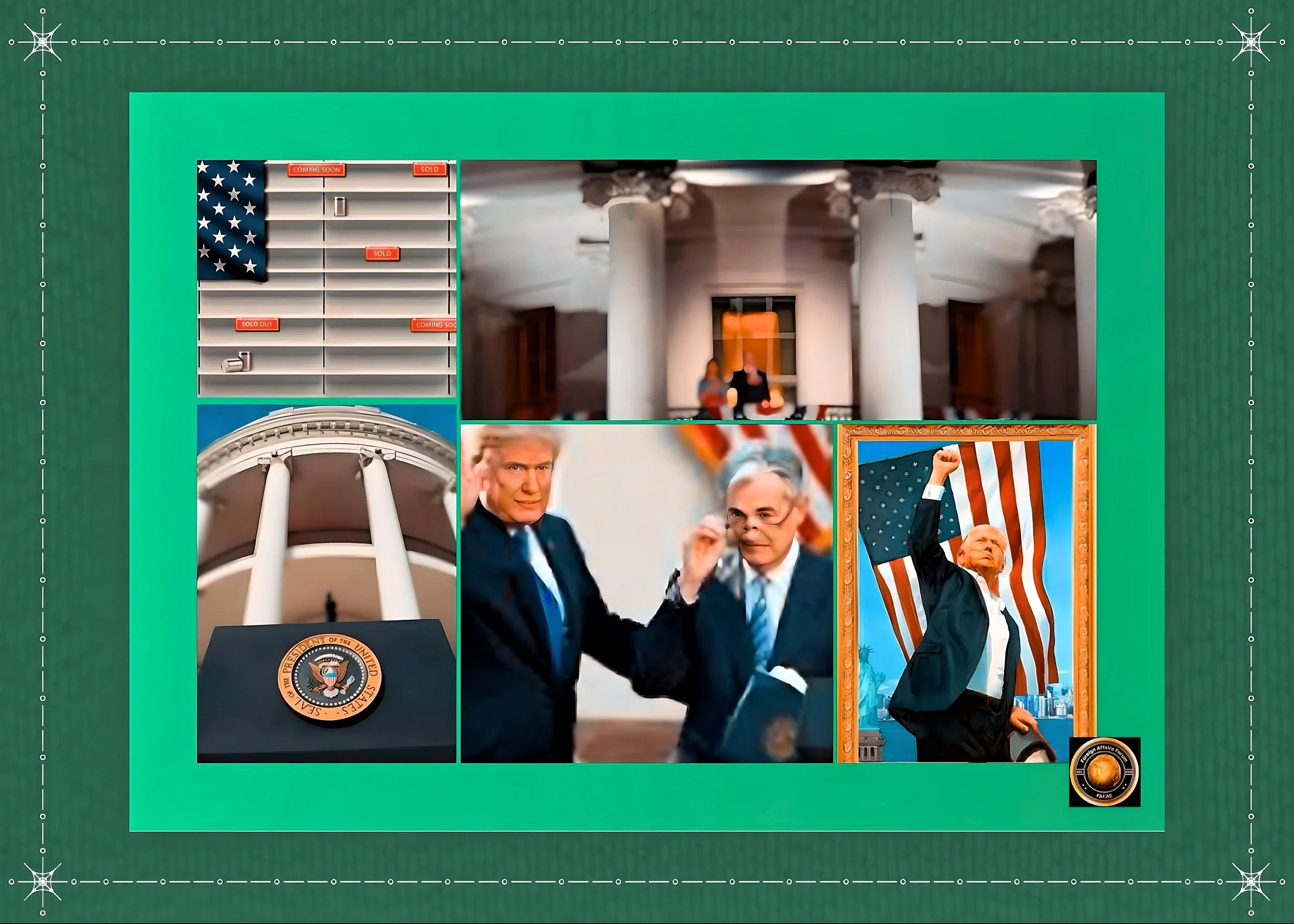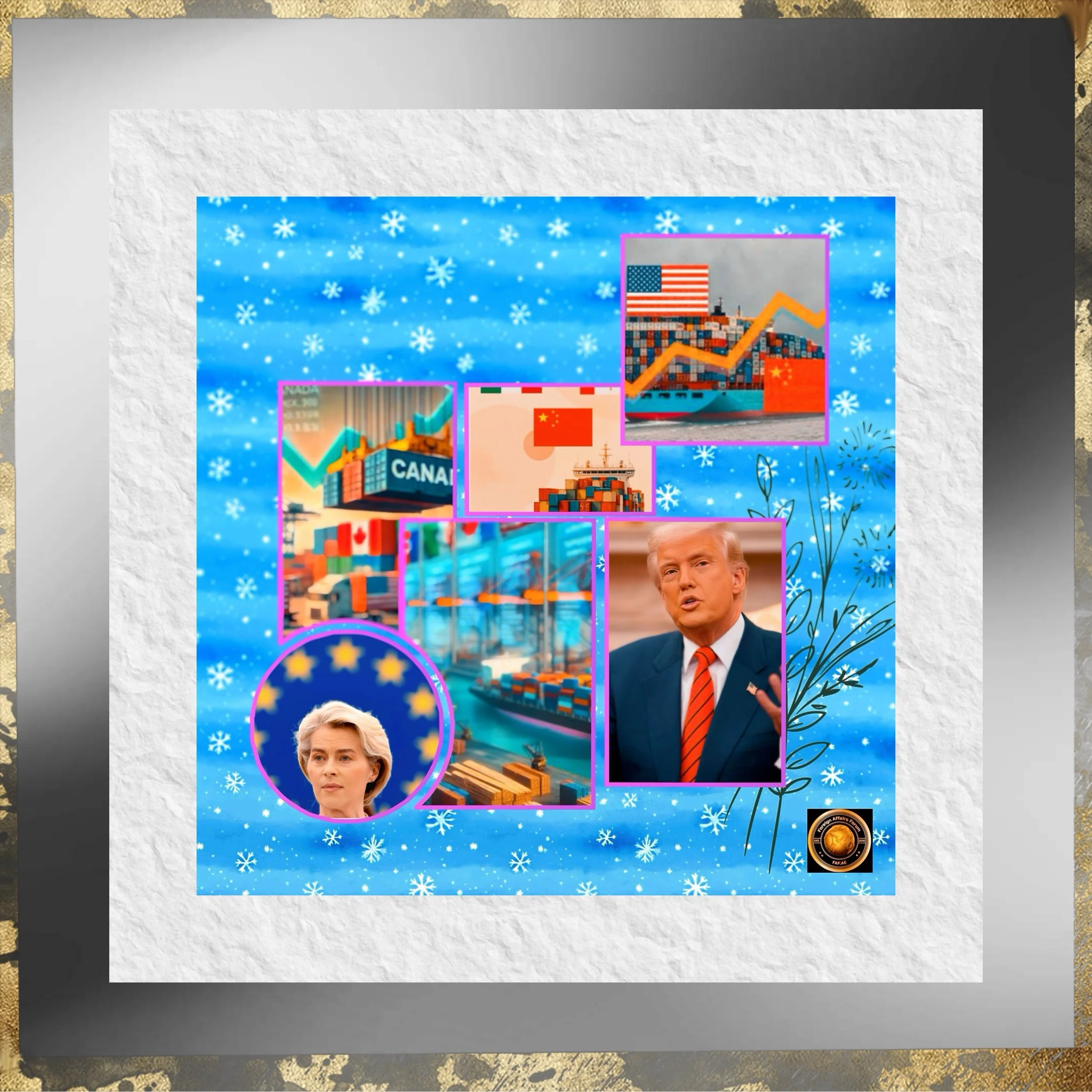The perfect blamer : Trump’s Strategic Positioning: Is Jerome Powell the Designated Scapegoat for Economic Challenges?
Introduction
President Donald Trump’s escalating rhetoric against Federal Reserve Chair Jerome Powell has ignited widespread speculation about a strategic effort to position Powell as a scapegoat for potential economic downturns.
While Trump publicly retreated from threats to fire Powell following market turbulence and legal advisories, analysts argue this recalibration reflects a tactical pivot rather than genuine reconciliation.
The convergence of Trump’s trade policies, legal constraints on Fed chair removal, and market volatility underscores a broader narrative: Trump lays the groundwork to deflect blame onto Powell if economic conditions deteriorate.
FAF report examines this dynamic's political, legal, and economic dimensions, drawing on recent developments, legal interpretations, and expert analyses.
Political Strategy
Scapegoating the Federal Reserve
Trump’s Public Criticism as a Deflection Tactic
Trump’s sustained attacks on Powell—labeling him a “major loser” and “Mr. Too Late”—coincide with mounting economic uncertainties tied to aggressive tariff policies.
By attributing economic risks to the Fed’s reluctance to cut interest rates, Trump seeks to redirect accountability away from his trade measures, which analysts warn could stifle growth and inflate consumer prices.
Macquarie strategists note that Trump’s rhetoric aims to establish a “foil” for future economic struggles, enabling him to argue that the Fed’s delayed rate cuts, rather than tariffs, precipitated downturns.
This aligns with Trump’s historical tendency to blame external actors for policy shortcomings, a pattern observed during his first term’s trade disputes.
The Role of Tariffs in Shifting Blame
Trump’s recent tariff escalations—including 145% duties on Chinese imports—have heightened recession fears, with economists predicting slowed growth and inflationary pressures.
Powell’s warnings that tariffs could “significantly disrupt supply chains” and complicate monetary policy further strained relations.
By juxtaposing these warnings with demands for immediate rate cuts, Trump frames the Fed’s caution as obstructive despite tariffs’ direct role in economic instability.
The Wall Street Journal editorial board criticized this strategy, arguing that Trump’s “economic aggression” against trading partners, not Fed policy, is the root cause of market unease.
Legal Constraints on Removing a Fed Chair
Statutory Protections and Historical Precedent
The Federal Reserve Act stipulates that board members, including the chair, may only be removed “for cause,” interpreted as misconduct or neglect—not policy disagreements.
Powell has repeatedly emphasized this legal barrier, stating his removal is “not permitted under the law.”
Historical precedents, such as the 1935 Humphrey’s Executor ruling, reinforce the independence of agency heads from presidential overreach.
White House lawyers reportedly cautioned Trump that firing Powell would trigger legal challenges and market panic, prompting his public retreat.
Supreme Court’s Pending Role
A pending Supreme Court case (Trump v. NLRB) challenges presidential authority to dismiss officials at independent agencies, with implications for the Fed.
While Trump’s legal team argues for expanded executive power under Article II, legal scholars warn that overturning Humphrey’s Executor could destabilize the Fed’s independence.
Powell has downplayed the case’s relevance to his position, but analysts note a ruling favoring Trump might embolden further attempts to politicize the Fed.
Economic Context
Tariffs vs. Monetary Policy
Conflicting Policy Objectives
Trump’s tariff-driven trade agenda clashes with the Fed’s mandate to balance inflation and employment.
Tariffs on imports like steel and electronics have raised production costs, contributing to persistent inflation (3.8% year-over-year as of April 2025).
Powell has resisted rate cuts amid these pressures, arguing that premature easing could exacerbate inflation while delayed cuts risk recession.
This policy dilemma leaves the Fed navigating a “no-win” scenario, with Trump weaponizing their caution as evidence of incompetence.
The Fed’s Data-Driven Stance
Contrary to Trump’s demands for immediate cuts, the Federal Open Market Committee (FOMC) maintains a data-centric approach, citing the need for “greater clarity” before making policy shifts.
Recent FOMC meetings ended in unanimous decisions to hold rates, reflecting a consensus that tariffs and geopolitical tensions outweigh the case for easing.
Chicago Fed President Austan Goolsbee warned that pre-tariff stockpiling may artificially inflate Q2 growth, masking underlying vulnerabilities.
Market Reactions and Investor Concerns
Volatility and the “Trump Rout”
Trump’s April 2025 threats against Powell coincided with the Dow Jones Industrial Average’s worst single-day drop since 2020 (‑987 points) as investors priced in heightened political risk.
The S&P 500’s year-to-date decline (‑14%) reflects eroding confidence in trade policy and Fed independence.
Barclays analysts attribute this to a “toxic mix” of tariff uncertainty and fears of Fed politicization, which could prolong market instability.
Long-Term Implications for Fed Credibility
Even if Powell retains his position, Trump’s attacks risk undermining the Fed’s perceived autonomy—a cornerstone of global investor confidence.
Historically, markets have rewarded central bank independence with lower risk premiums, but political interference could reverse this trend.
UBS economists warn that delegitimizing the Fed might accelerate capital flight to non-dollar assets, further pressuring the U.S. economy.
Historical Precedents and Supreme Court Implications
The Humphrey’s Executor Legacy
The 1935 Supreme Court ruling in Humphrey’s Executor v. United States established that Congress could shield agency heads from partisan dismissal, a precedent underpinning Fed independence.
Trump’s challenge to this precedent in Trump v. NLRB seeks to redefine “for cause” removals, potentially enabling future presidents to oust Fed chairs over policy disputes.
Legal scholars caution that such a shift would erode the institutional safeguards that insulate monetary policy from electoral cycles.
Comparative International Perspectives
The Fed’s independence contrasts with central banks in Turkey and Argentina, where political interference has exacerbated hyperinflation and currency crises.
The European Central Bank (ECB), despite its singular focus on price stability, has faced similar pressures but maintained a data-driven stance, cutting rates seven times since 2024 to counter global headwinds.
Powell’s adherence to this model, despite Trump’s criticisms, reflects a commitment to stabilizing long-term expectations.
Conclusion
Implications for Fed Independence and Economic Policy
Trump’s campaign against Jerome Powell exemplifies a broader strategy of centralizing blame for the economic risks created by his own policies.
While legal and political barriers make Powell’s removal unlikely, the sustained rhetoric risks eroding public trust in the Fed and destabilizing markets.
The Supreme Court’s pending decision on presidential removal authority looms as a critical juncture, potentially reinforcing institutional independence or empowering executive overreach.
For policymakers, the episode underscores the necessity of safeguarding central bank autonomy against short-term political pressures—a lesson echoed by historical precedents and global counterparts alike.
As trade tensions persist, the Fed’s ability to navigate political crossfire while maintaining price stability will remain pivotal to U.S. economic resilience.
Trump.Forum






